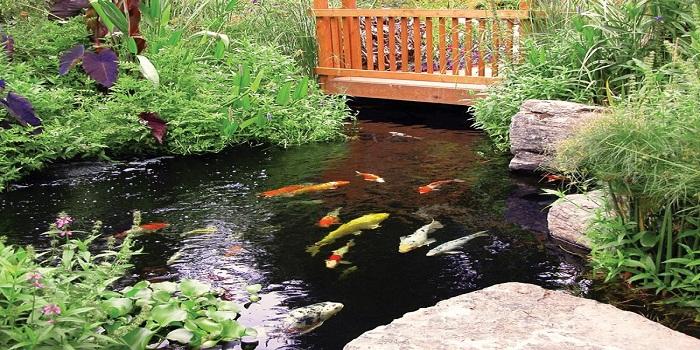- Buy equipment that can improve the water circulation and the filtration. A water aerator and a filtration system are two excellent investments for large Koi ponds. The first will prevent the stagnation of the water, and create a more healthy and pleasant aquatic environment for fishes and plants. The latter removes organic debris.
- Keep most of your pond shaded. Only 30-40% of your pond should be directly exposed to sunlight. Plants need sun, but fishes not so much, so if you’re growing your pond more for the fishes than for the plants then you can shade even more of your pond. Keep all your pond exposed to sunlight and algae will thrive and kill the fish.
- Don’t put more Koi in your pond than you can handle. Koi fish may be small, but they need space to grow, and it’s better to keep their population in check. Next time you’re tempted to buy more Koi remember that more fishes will create more waste, and that in turn will encourage algae to bloom. If you’re resolved to add more Koi than your current pond can sustain, then consider expanding the pond. But know that this is not always easy to do, and can disturb the pond fish and plant life.
- Manually remove organic and inorganic debris. Don’t expect your filter to do all the cleaning for you. The most harmful debris that can reach your pond includes dead leaves, plastic bags, dead plants, and bugs and other creatures. It’s a good practice to clean your filter weekly, and after you’re done with it to remove any harmful debris you spot floating on the surface of the water.
- Drain your pond often. Ideally, you will want to drain around 10-15% of the pond water every day and put fresh water in its place, but few pond keepers have the time or the patience to do that, especially for large Koi ponds. You can do it once a week or even once a month, and you will create a better aquatic environment for your Koi.
- Maintain a large bacterial colony in your pond by adding beneficial bacteria. Bacteria clean the pond of harmful substances, such as fish waste, organic debris, and turn ammonia into nitrates, improving the natural filtration of the pond, and preventing algae blooms, which are harmful for the Koi. You can buy bacteria from your pond solutions supplier as powder or liquid. These products are easy to procure and inexpensive, so you have no excuse for not using them.

6 Large Koi Ponds Maintenance Tips
Regular maintenance is necessary if you want to keep your pond beautiful. Fortunately, large Koi Ponds are not at all difficult to maintain. It’s important though that you do a few things to ensure that the water in the pond stays healthy for the fish and for the plants.